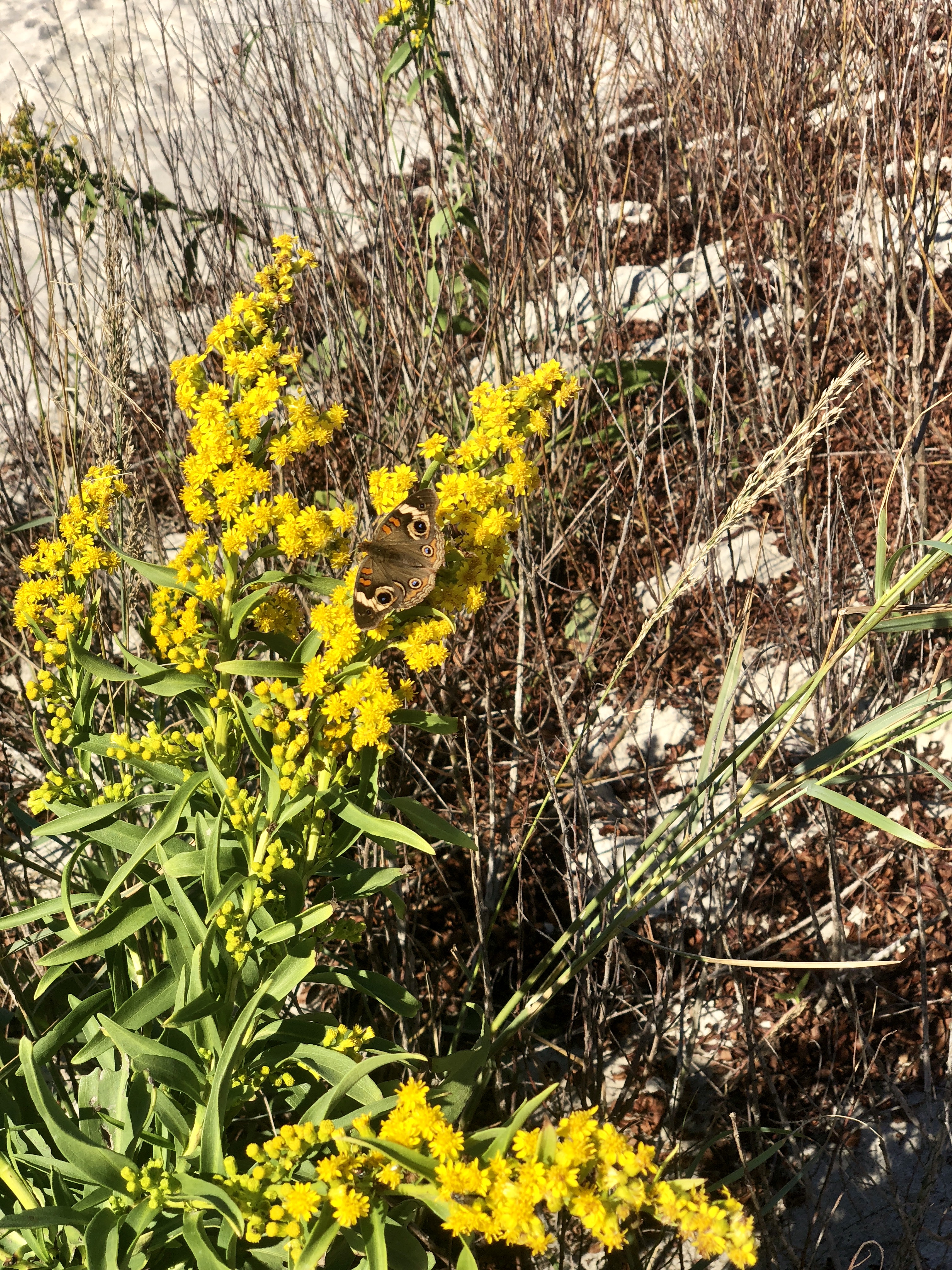Flowerbed Maintenance in October
Flowerbed maintenance is recurring maintenance service that we offer our customers. The service runs from March through November. Every month we make one scheduled visit to the property to perform our flowerbed maintenance routines.
Each month poses a slightly different challenge, keeping up with pruning, staying on top of seasonal weeds, and improving the overall quality of the gardens. To make the task even more interesting each year seems to bring its own unique weather patterns to the table.
Here are the issues that I came across this month, and how I took care of them:
- Confused azaleas, rhododendrons, and forsythias
- New fall blossoms
- Winterizing perennials
- Prolific Chickweed
- Fall Leaves
Confused azaleas, rhododendrons, and forsythias
In my work this week, I noticed something unusual. Flowers are blooming even though they shouldn’t be. It looks like most azaleas, rhododendron, and even forsythia don’t know what to make of the weather we have been having

Typically these plants bloom in the spring. However, I have witnessed many of them blooming in October, the complete opposite month. Azaleas seem to be struggling with the problem the most, then rhododendrons and forsythia respectively.
I don’t have a definitive answer, but I think there is a perfect culmination of the right variables. At the beginning of the month, we had a mix of cold 65F days and several hot 85F days. The temperature fluctuations were accompanied by record-breaking amounts of rain. When else do temperatures go from cool to warm, with a bunch of rain?
April and May.
I’m not sure what this means for spring blossoms. It doesn’t appear that the bushes are in full bloom. The temperatures also plummetted again about halfway through the month. Hopefully, the cold shocked buds back into dormancy and there will be some left for the spring.
New fall blossoms
Another observation I made while completing flowerbed maintenances this week includes the beautiful fall blossoms! Sedum is really coming out with its bright red hue! (pictured as the feature image at the top of this post)
In addition to sedum, beauty berry bushes look phenomenal right now. They have small clusters of shimmering purple berries accented by a backdrop of beautiful lime green foliage.
Solidago is also in full bloom, also known as Golden Rod. If you want a native, pollinator-friendly plant, look no further! Below is a photo of wild Solidago on the shores of Assateague. A butterfly is feeding amidst the flowers. There were also copious amounts of Monarch butterflies that have not migrated south yet. This photo was taken by me on Wednesday, Oct. 17, 2018.

Winterizing perennials
As a part of our flower bed maintenance service, we perform “light pruning” tasks on herbaceous perennials. Winterizing perennials is encapsulated in that category. It is important that perennials are trimmed to the ground each year. Some get pruned at different times, though. This month our focus was on the following perennials:
- Coneflower
- Black Eyed Susan
- Peonies
- Hosta
There is no hard or fast rule governing when these plants should be cut back. Like much of gardening, it is a choice left to the gardener and their artistic preference. I like to leave the foliage intact for as long as possible. I think that it adds interest to the garden and gives visitors something to look at. However, when leaves become eaten and wilted like the hosta below, it is time to remove them. I simply cut them at the base, about 1″ from the ground, using a pair of hand pruners.

Not all hosta need to be cut back, though. Only a few at each property were trimmed for the winter. Other varieties still looked healthy and beautiful.
I take the same approach with other perennials. It finally seemed that Cone Flowers and Black Eyed Susans had nothing of benefit to give to the garden. So those were also trimmed to the base of the plant.
When plant stems start to accumulate powdery mildew, pictured on Peonies below, it is definitely time to cut them back for the year! Mildew and fungus is the main reason for trimming and winterizing perennial. Moist spring conditions offer fertile breeding ground for molds and fungus to fester and destroy your plants.

Prolific Chickweed
Weeding is a normal part of garden maintenance. This month I used glyphosate for a few reasons.
First, a lot of my flowerbed maintenance customers also receive aerating and overseeding service. Naturally, a lot of grass seed ends up drifting into flower beds. to stop an infestation from happening, I like to treat the young seedlings and stop the problem before it starts.
Second, chickweed is running rampant right now! Chickweed is a winter annual weed that starts growing around this time of year. Unfortunately, I did not think to snap a good picture, but I will add one if I come across any more, which I’m sure I will. Chickweed reproduces through seed. I make it a special point to treat the chickweed and kill it before it goes to seed, spreading more weeds. Treating chickweed it the only economical way to deal with the issue, that I know
Fall Leaves
Not an issue yet, fall leaves are starting to accumulate in flower beds. Unfortunately, cleaning up leaves in the flower beds is not a part of our flower bed service. The unpredictability factor makes it impossible to predict when and how many leaves will be in the bed. However, we have started collecting leaves for some customers. If you are interested in leaf collection or know that you will need it this year, fill out and submit this form.
